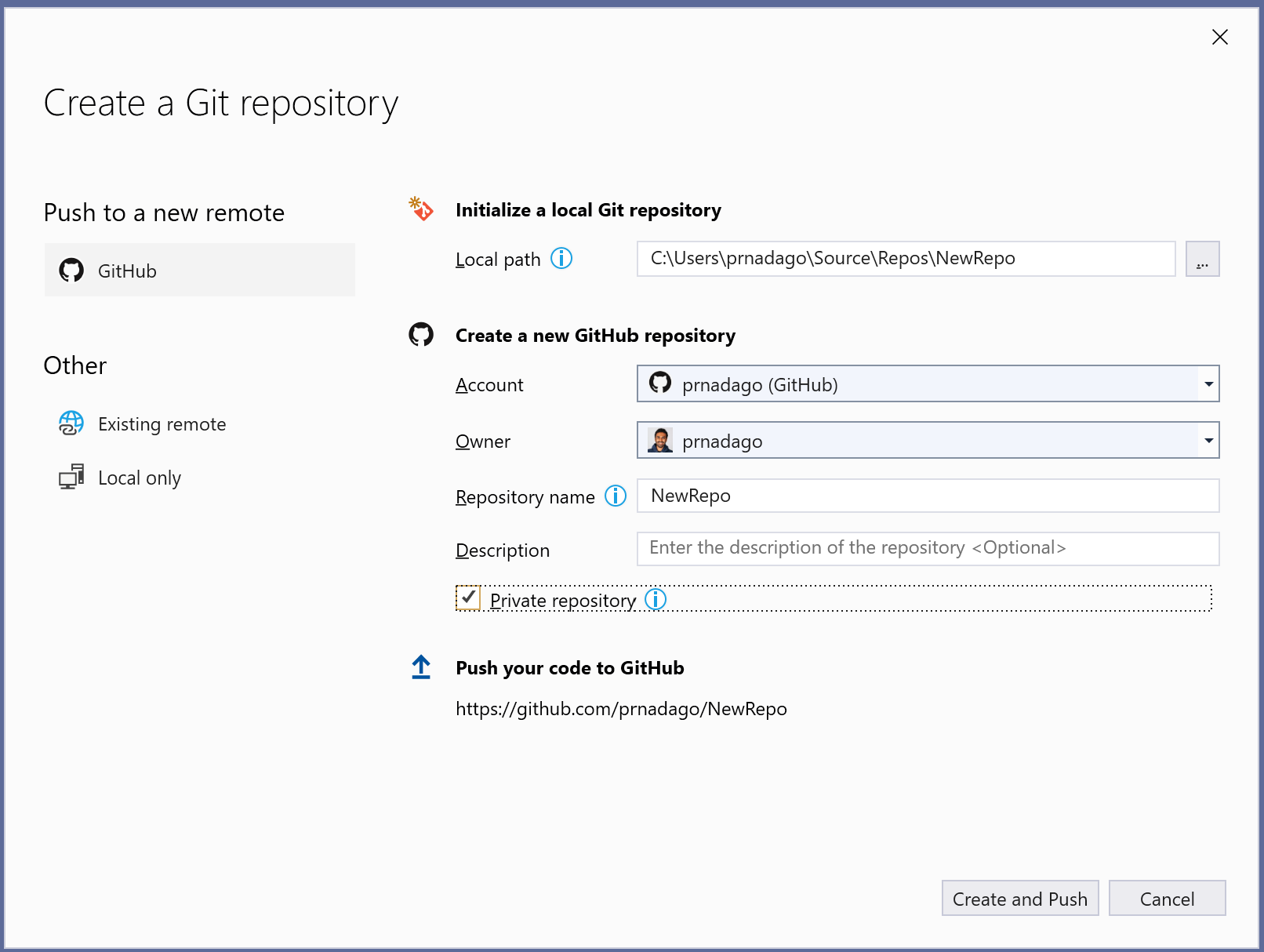

- #Visual studio 2019 github install
- #Visual studio 2019 github update
- #Visual studio 2019 github upgrade
- #Visual studio 2019 github password
- #Visual studio 2019 github windows
You can review comments made in your pull request in a web browser on the Azure Repos pull request page.

Verify the remote branch to merge the changes into, such as my-feature. Open Pull Requests in Team Explorer, and click New Pull Request. You can see the outgoing commits and share them by clicking Push if you are working with a branch that is already shared, or Publish if you are working with a newly created local branch.Ĭreate a pull request so that others can review your changes. Open up the Synchronization view in Team Explorer. Enter a title and optional description, specify any reviewers, optionally associate any work items, and then select Create.įor more information on pull requests, see the pull request tutorial. In this example, we want to merge the commits from the ReadMeFix branch into the main branch. Select New Pull Request to open a web browser where you can create the new pull request in the Azure Repos web portal. In Pull Requests, you can view pull requests opened by you, assigned to you, and you can create new pull requests. Open Pull Requests in Team Explorer by selecting Home and choosing Pull Requests. The next time you push changes, you'll see the list of commits.Ĭreate a pull request so that others can review your changes. Select Push to push your changes to a new branch on the remote repository and set the upstream branch. Push your changes to a new branch on the origin remote and set the upstream branch. If this push is your first to the repository, you'll see the following message: The current branch does not track a remote branch. Select Push to share your commit with the remote repository. You can also go to the Synchronization view from Changes by choosing Sync immediately after making a commit.

In Team Explorer, select Home and then choose Sync to open Synchronization. Learn more about how the Git experience compares with Team Explorer on this Side-by-side comparison page. If you're using Visual Studio 2019 version 16.8 or later, try the Git version control experience. If you're collaborating with someone using a branch they've created, you can skip to the following git checkout step. Click Clone to start copying the repo locally.Ĭreate a branch where you make your changes to the code. Change the local path to the location where you want to store your repo. The clone URL is automatically populated and a default local path is provided. Sign in to Azure DevOps from Visual Studio. Click Allow if prompted to open Visual Studio. This will ensure that all Git installations on your system will use this specific installation of GCMW.Project URLs have changed with the release of Azure DevOps Services and now have the format /) and then open Visual Studio to connect to your project.
#Visual studio 2019 github update
Then update your global git config: c:\>git config -global -editįind the section and overwrite it with (update the path to the location where git-credential-manager.exe is installed on your system:

#Visual studio 2019 github windows
You can always find the latest version of the Git Credential Manager for Windows here.
#Visual studio 2019 github install
First install the latest version of the Git credential Manager for Windows. It's better to point Git to a specific version of the Git Credential Manager for Windows. While this usually works (I've done this myself in the past), it can cause issues when installing a Visual Studio Update in the future. Many posts on Stack Overflow will tell you to overwrite the files in your Visual Studio installation with the latest files from the GCMW repository.
#Visual studio 2019 github upgrade
In all of these cases, the recommendation is to upgrade the Git credential Manager for Windows. The error was slightly different in this case, but the root cause was the same: Git failed with a fatal error.Ĭannot spawn /C/Program Files (x86)/Microsoft Visual Studio/2017/Community/Common7/IDE/CommonExtensions/Microsoft/TeamFoundation/Team Explorer/Git/mingw32/libexec/git-core/git-askpass.exe: No such file or directoryĬould not read Username for '': terminal prompts disabled. Similar issues have occurred in the past while trying to access BitBucket. One of those current scenarios is when you want to access a Microsoft Account backed Azure DevOps organisation using an Azure Active Directory account: You may receive "Git failed with a fatal error. There are cases when you need a specific (usually newer) version of the GCMW.
#Visual studio 2019 github password
This nifty little helper allows you to authenticate to Azure Repos among other git providers using your normal username and password and optional 2FA and it will handle the Personal Access Token + Renewal for you. Visual Studio ships with the Git credential Manager for Windows (GCMW) as part of its Team Explorer feature.


 0 kommentar(er)
0 kommentar(er)
